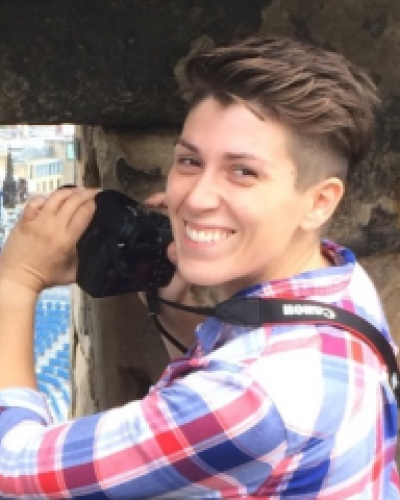Kate MacCord: Recipient of the School of Life Sciences 2021 Faculty Teaching Award
Learning is a dynamic, uneven process. At the best of times, learning is driven by curiosity. At the worst of times, learning is driven by the need to fulfill a requirement. Each scenario offers an opportunity to push students to think critically about what they believe possible about themselves and the world around them. These opportunities are even more apparent in online teaching where students come from all over the world, from every culture and socioeconomic background, to gain access to an education.
My students are as diverse in their experiences as they are in their knowledge bases. From octogenarians to active duty military, from first generation to Honors College, from mothers of four to fresh out of high school; they all enroll in my courses. These categories are often intersectional, and enhance the richness of my classes. This is the strength and reward of online teaching--our online students are far more diverse than our immersion population. And in this diversity, there is more opportunity to foster dialogues and understanding of different perspectives.
This diversity also presents challenges that are not unique to online education, but heightened from immersion. How do you create a community of students who are so different and interact asynchronously? How do you create activities that challenge students with such different knowledge bases and ways of thinking?
I capitalize on this challenge by designing my courses to foster three qualities: empathy, intellectual flexibility, and creativity. Fostering empathy requires creating opportunities that allow students to form connections and explore their understanding of learning materials together. I do this through group discussions and a variety of technologies that allow students to get to know each other and feel safe expressing their perspectives. Fostering intellectual flexibility involves placing my students and myself in foreign perspectives, often through role-play. I ask students to place themselves in historical moments and mindsets that they’ve never encountered and solve problems as people in those times would. These types of activities foster a sense of creativity within students and allow them to explore and make sense of different perspectives. Together, we mutually inspire a dynamic approach to history that reinforces each of our curiosity about the natural world and the actors and ideas that have come to define our understanding of it.
In 2021-2022, I’m teaching History of Biology, History of Medicine, and Biology and Society. These all attract a diversity of students and serve a number of majors. This increases both the challenges and rewards of online teaching.
